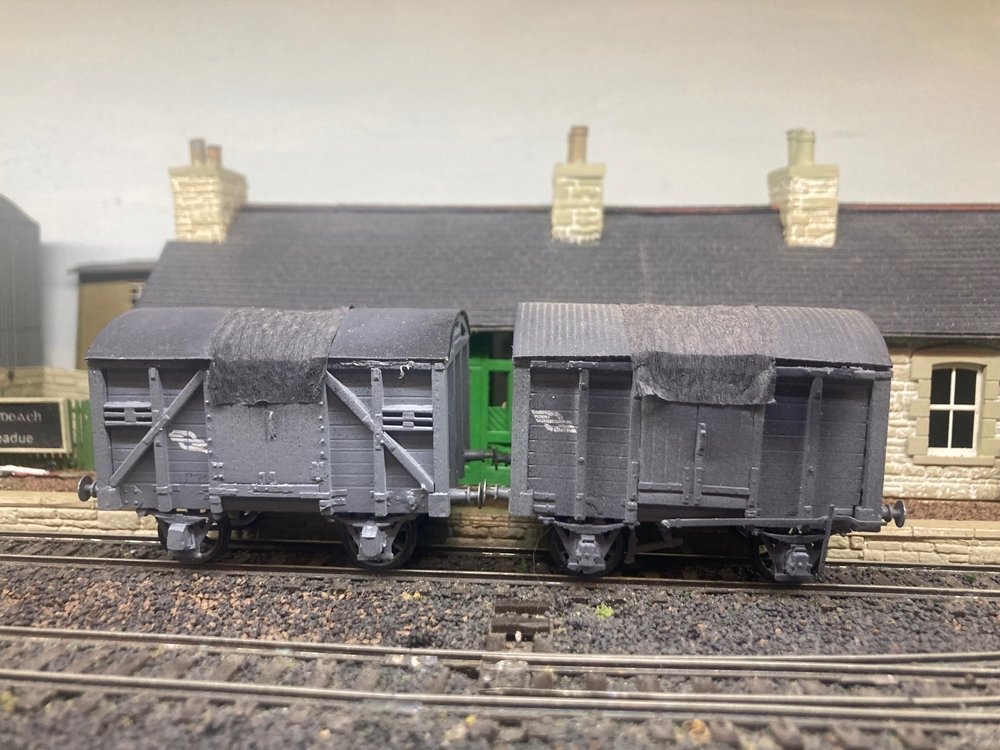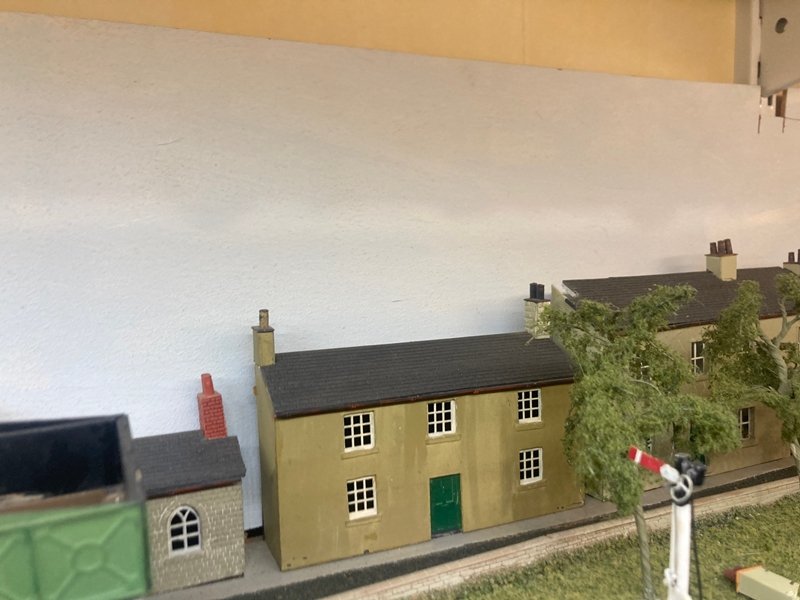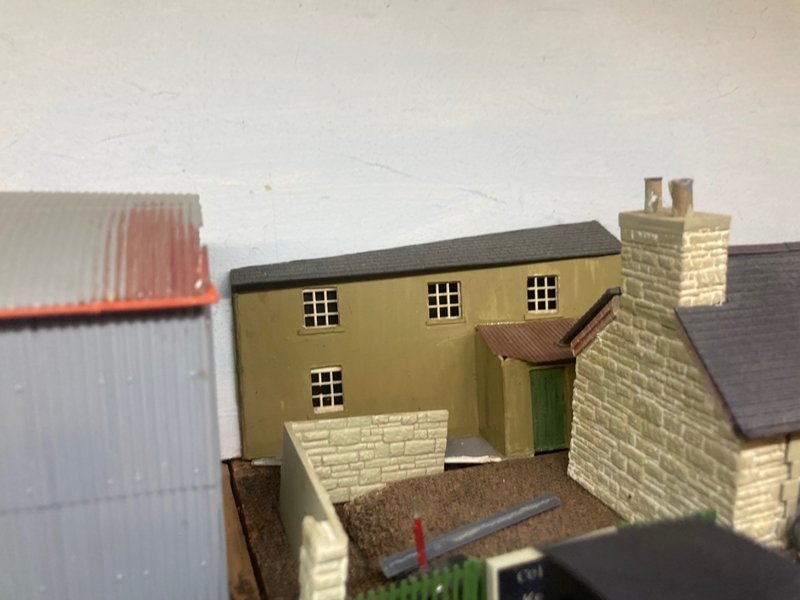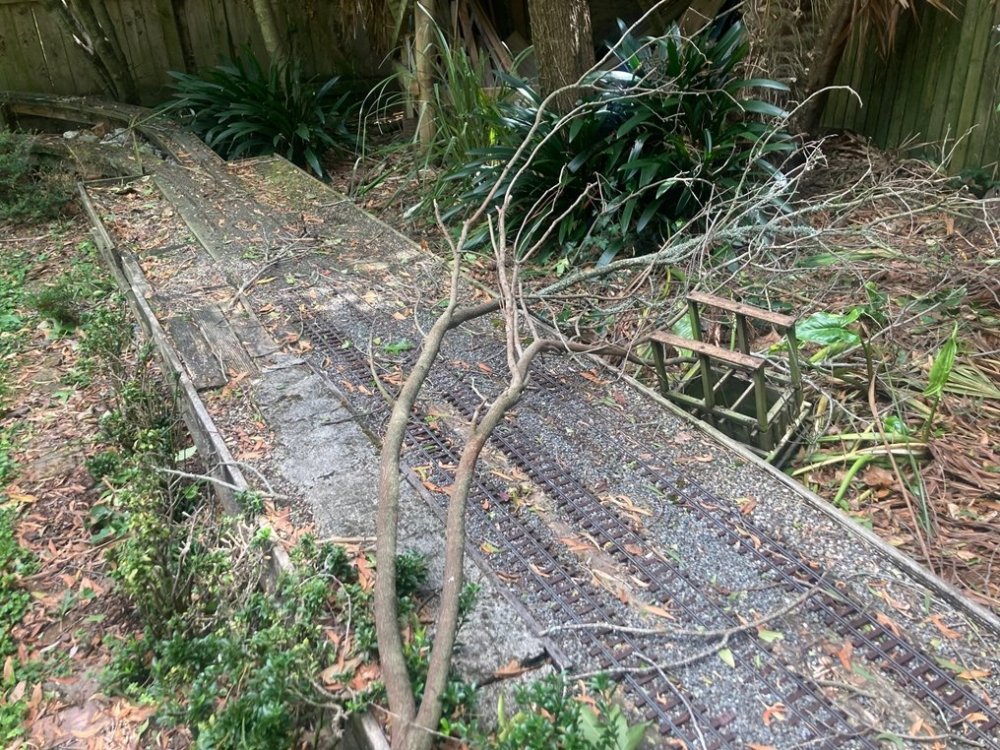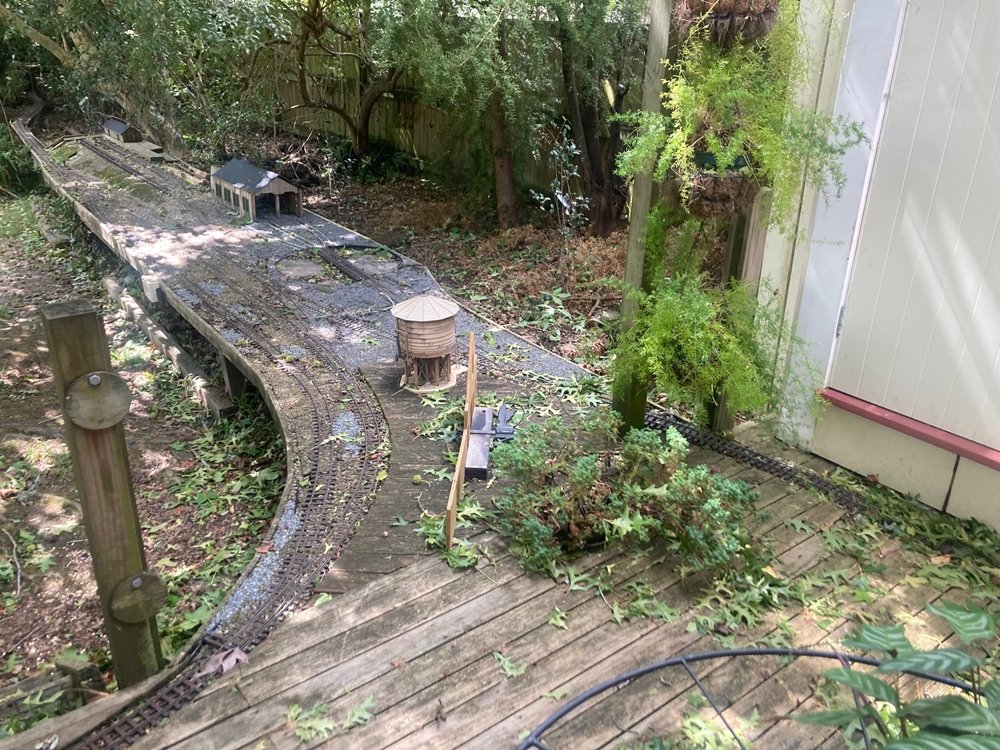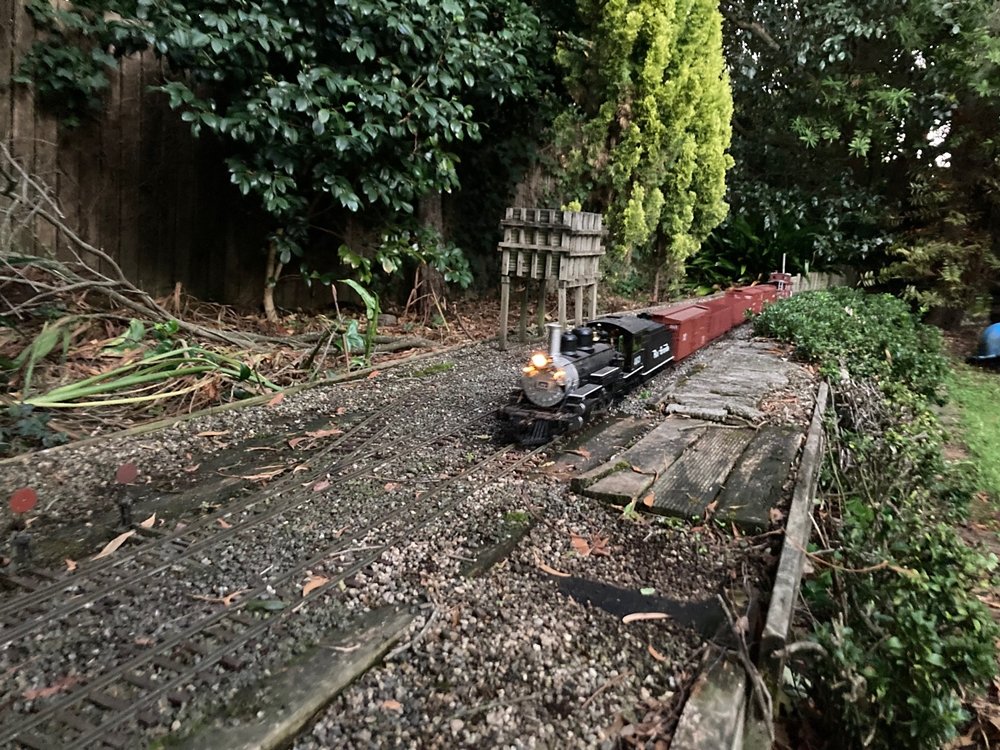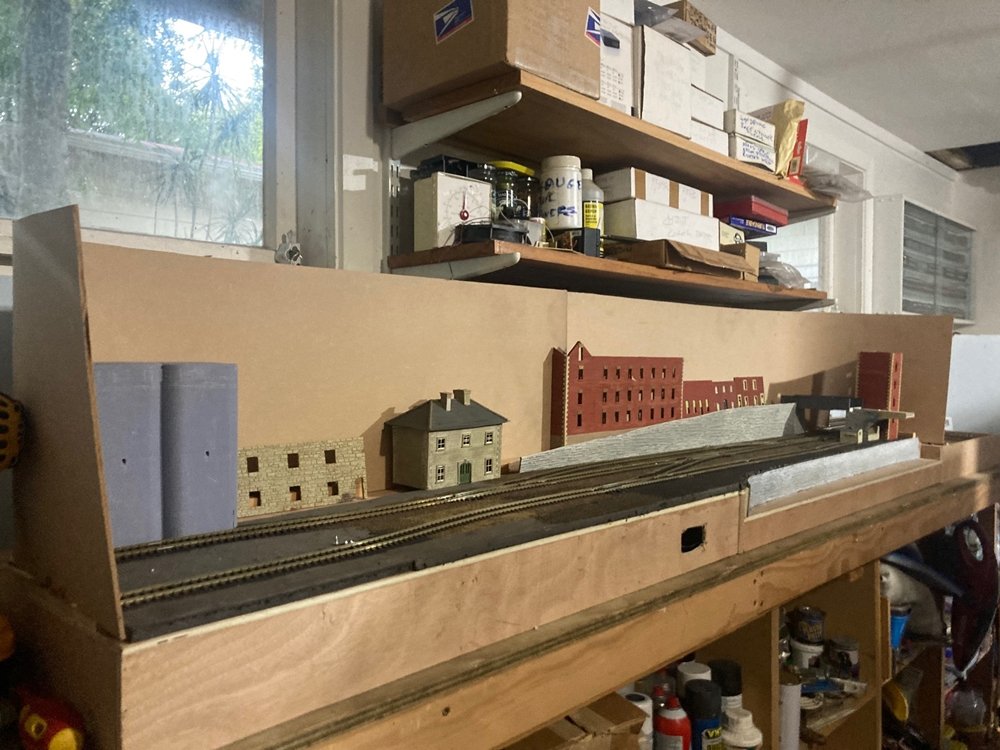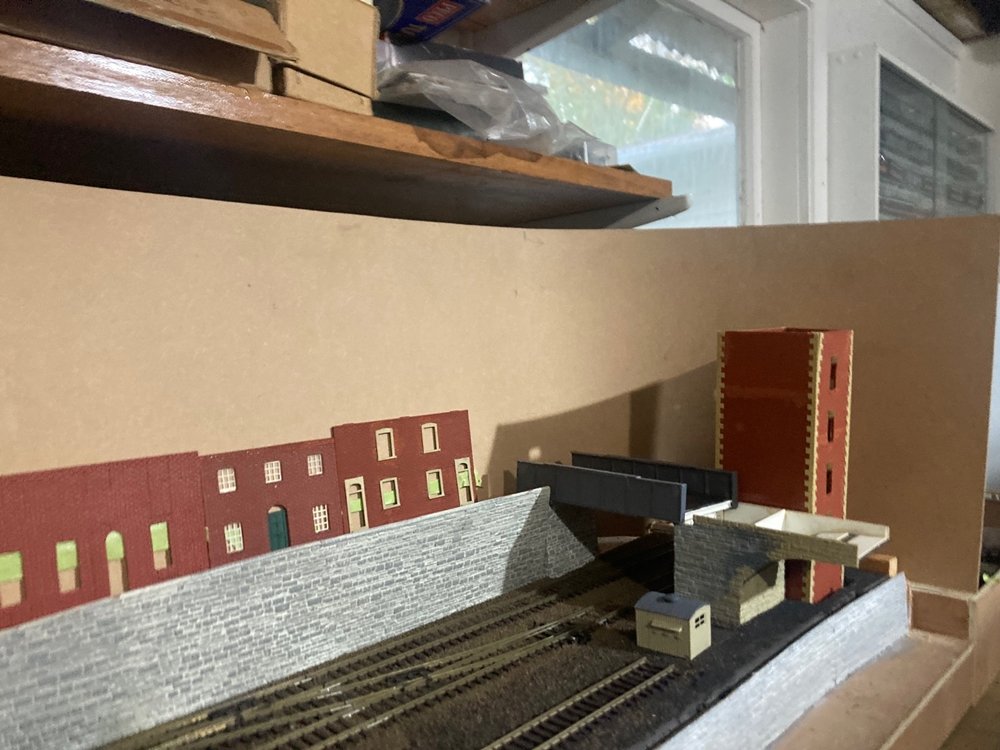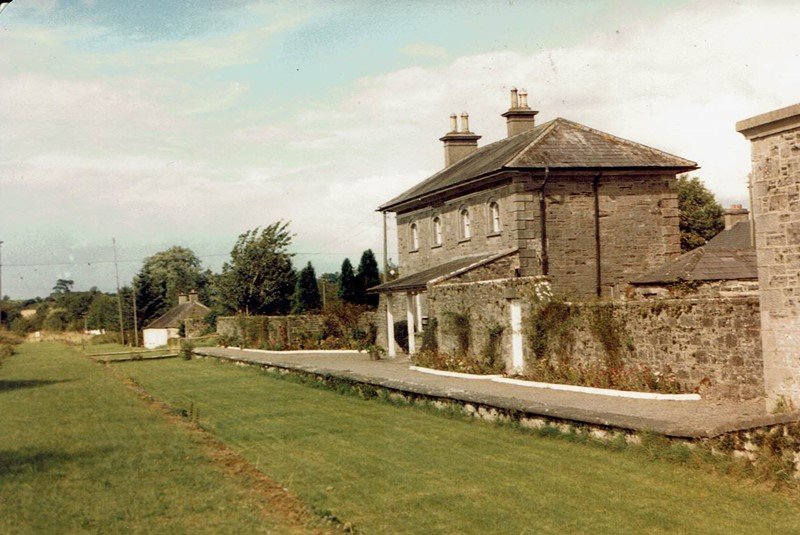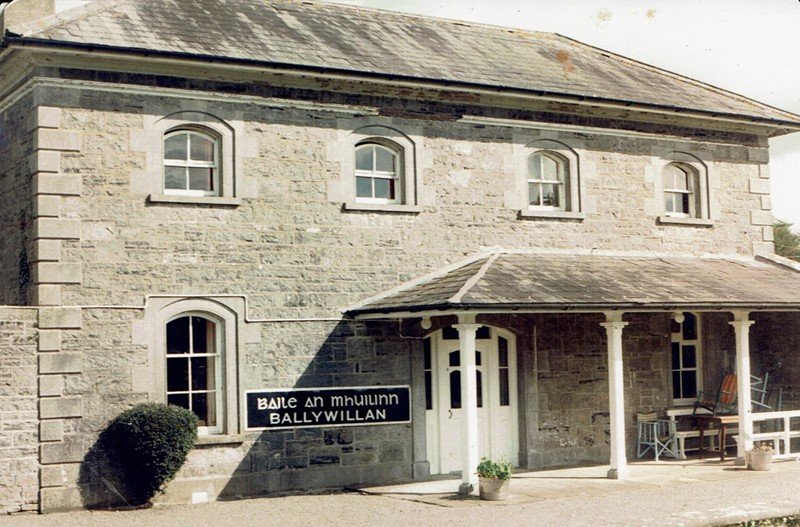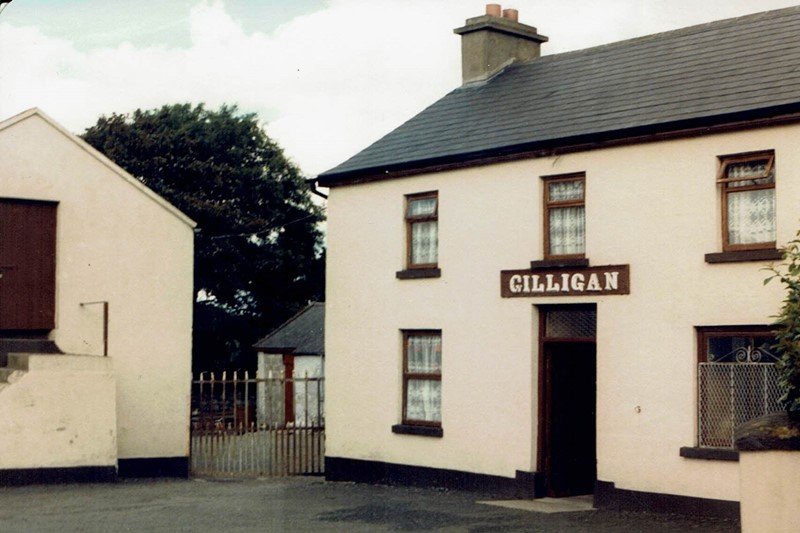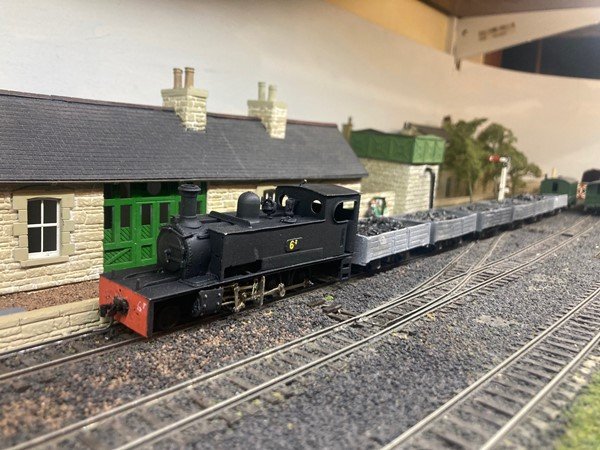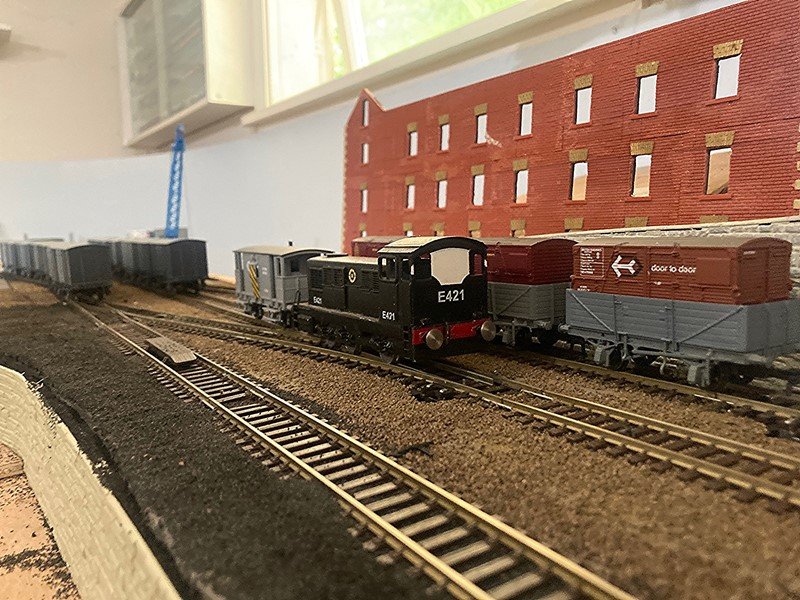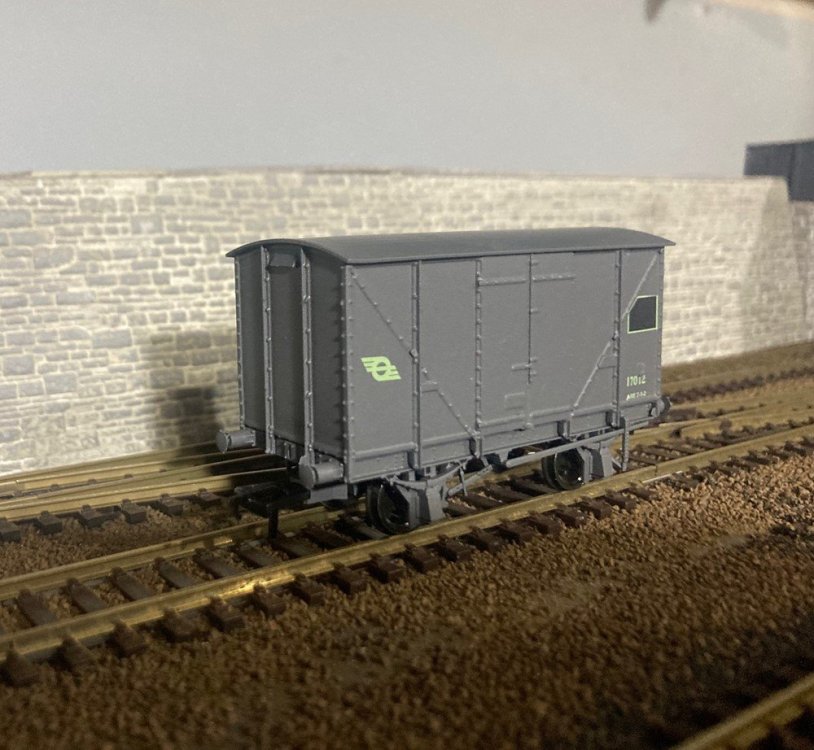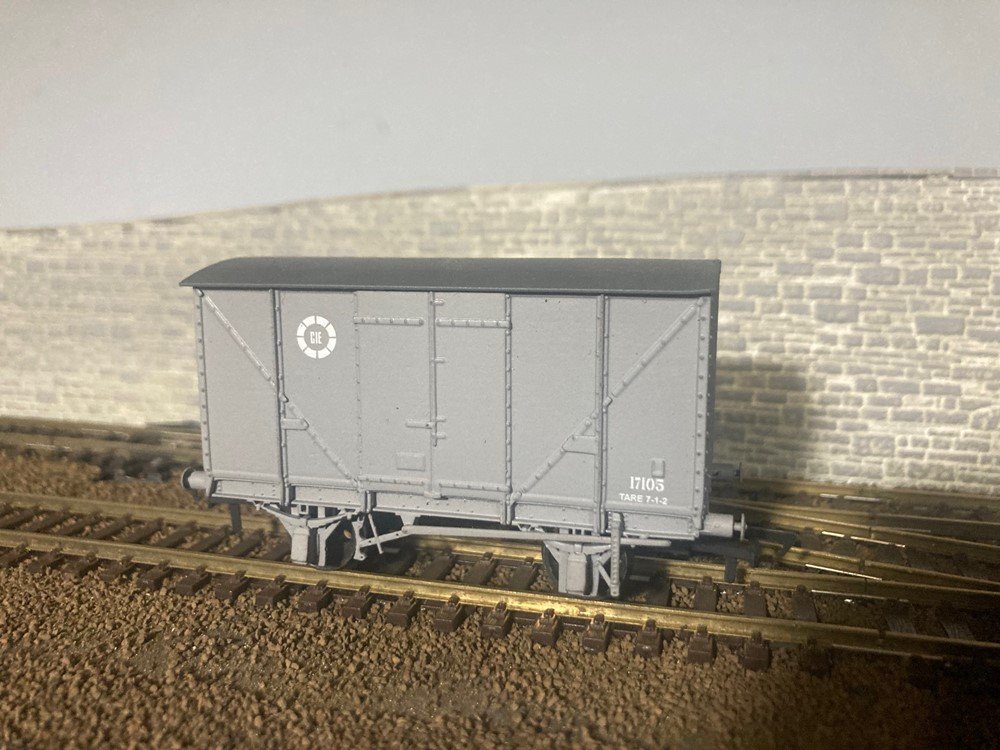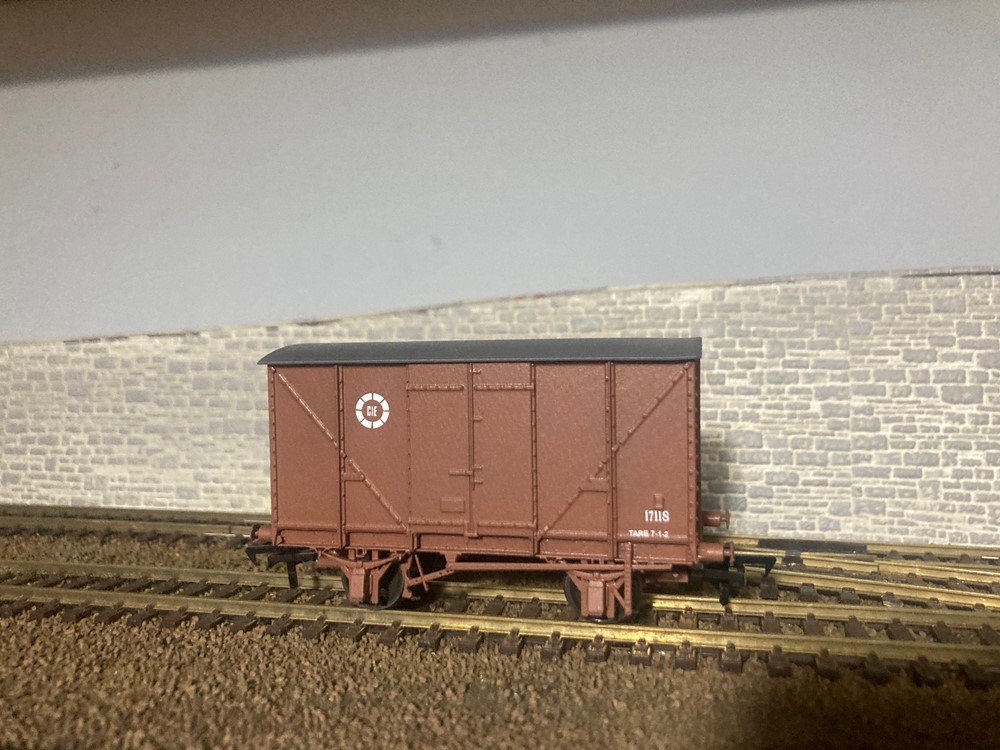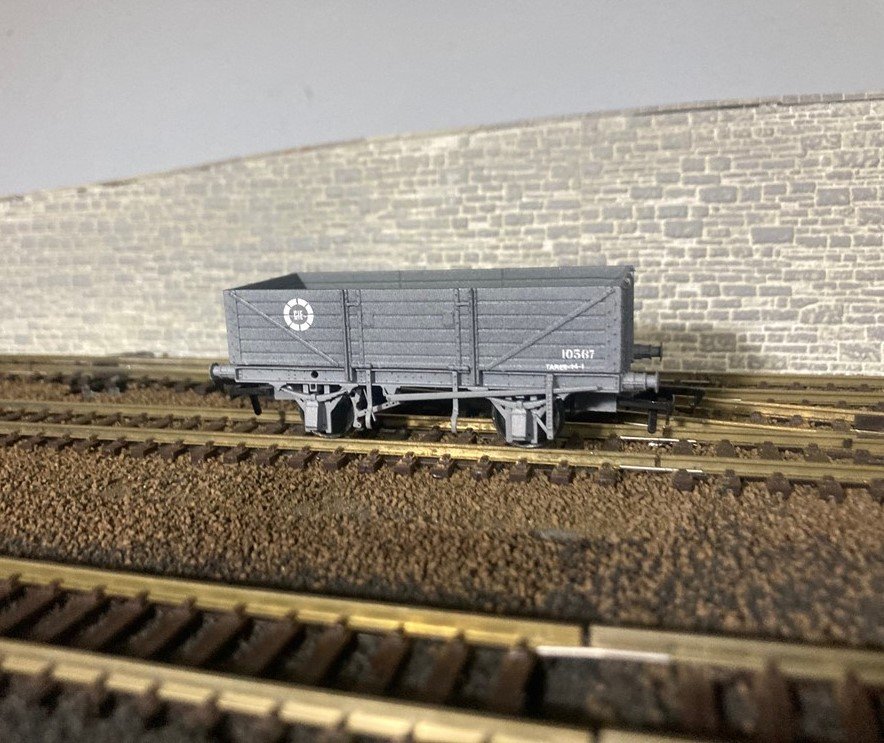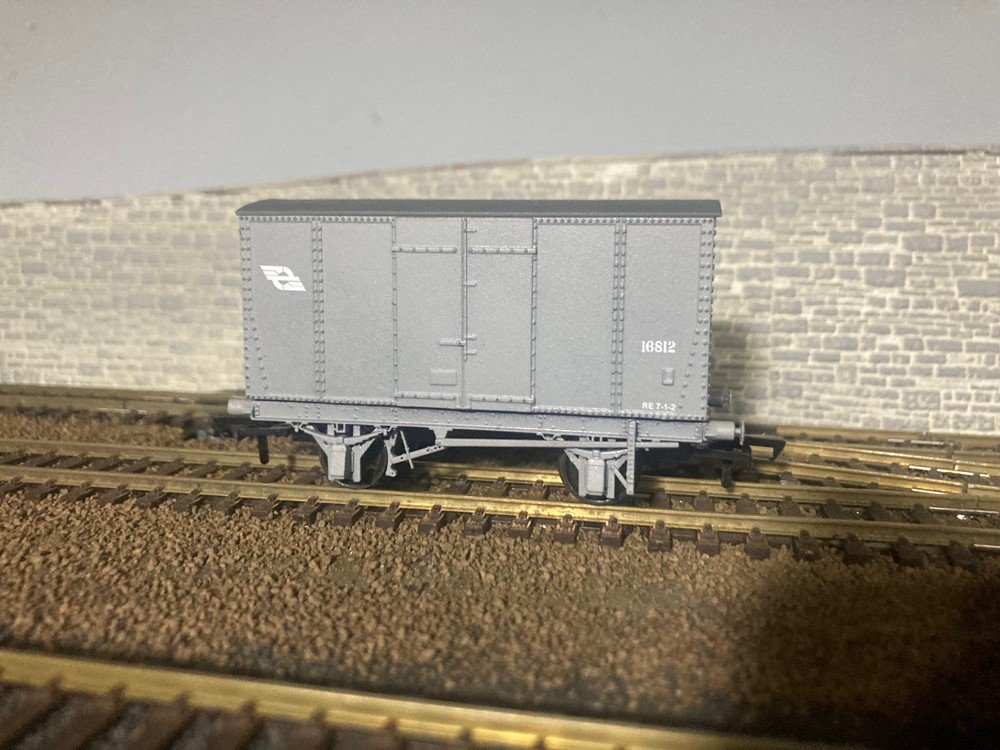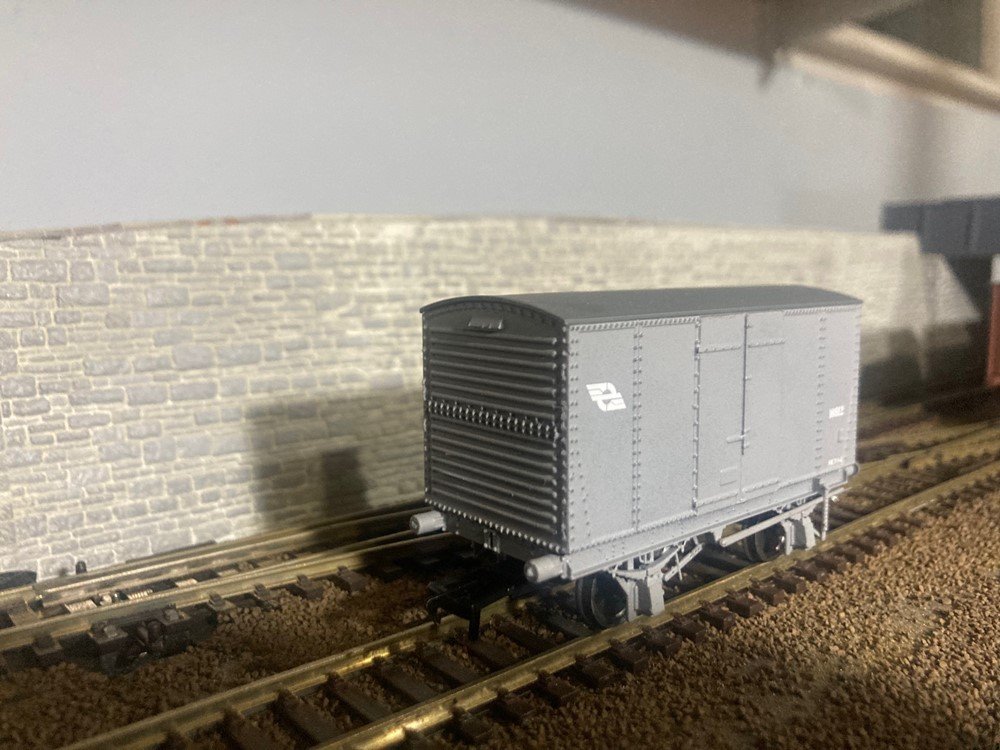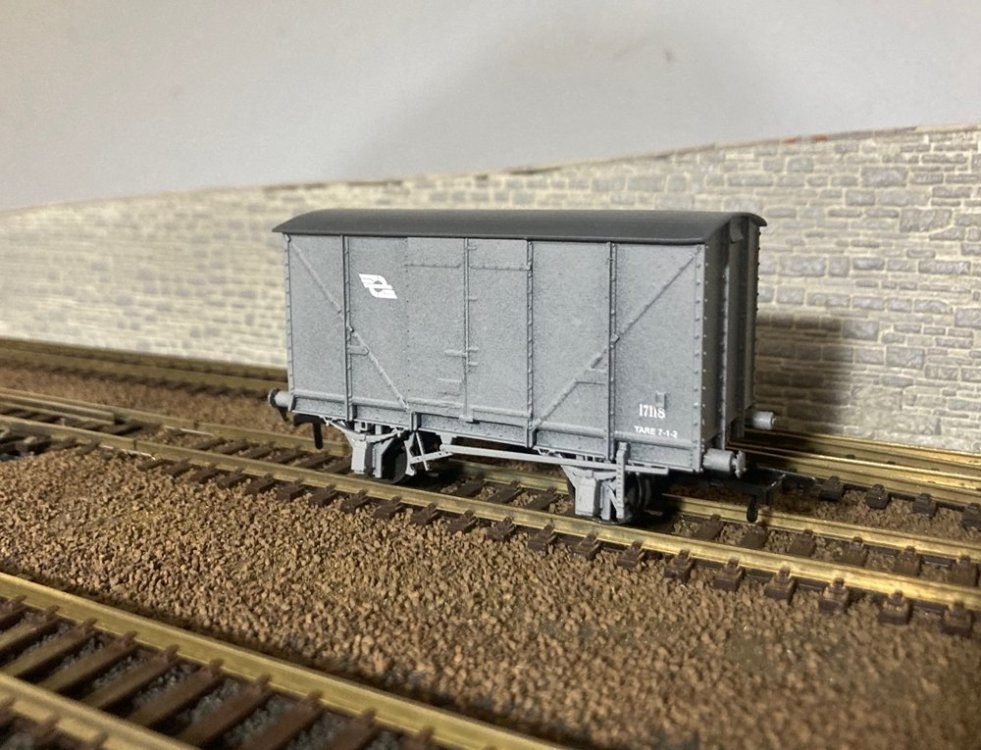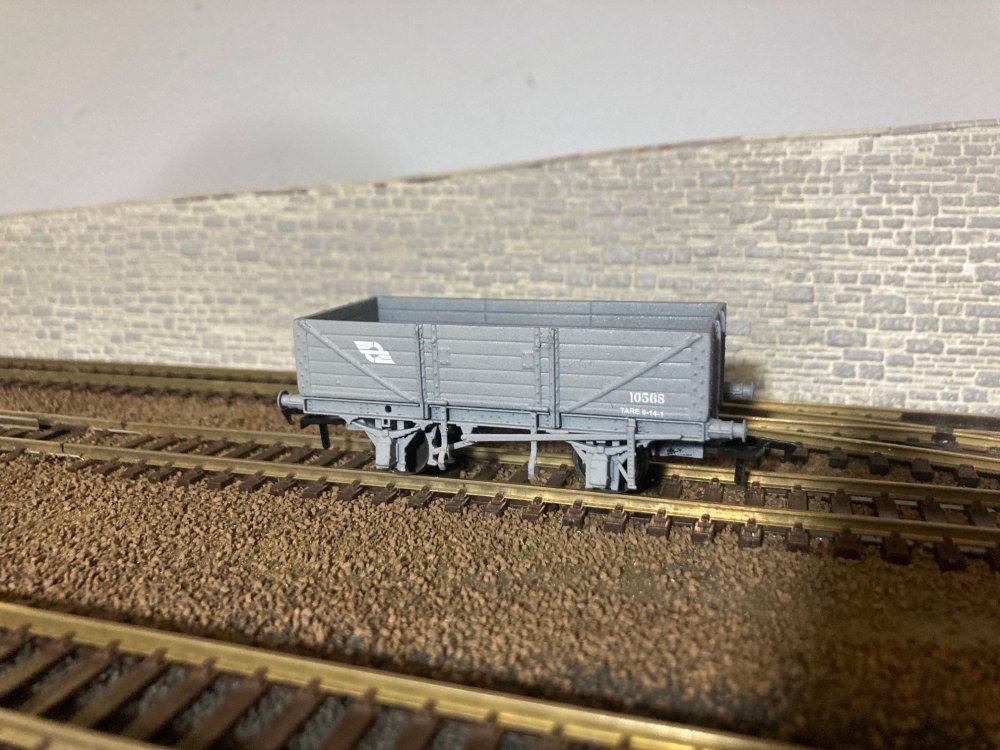-
Posts
4,892 -
Joined
-
Last visited
-
Days Won
119
Content Type
Profiles
Forums
Events
Gallery
Blogs
Community Map
Everything posted by Mayner
-
For many years Studio Scale Models have produced high quality kits of both the GSWR & MGWR Convertible wagons. SSM also produce the timber underframe version of the GSWR/GSR/GNR(I)/CIE open wagon MGWR Standard Covered Wagon on left GSWR version on right. These kits are reasonably simple to assemble using superglue or epoxy for modellers who have not mastered soldering
-
Great collection, a great example of what could be achieved with MTK and DC kits and scratchbuilding in plasticard, that Bombay EMU is definitely fits into the something completely different category I have a soft spot for the older Southern Region EMUs & DEMUs from weekend day trips around London during the late 80s the sheer variety of stock and level of intensity of operation was an eye opener for someone who thought the lines out of Connolly Station were busy
-
Just the two photos in my 17th Feb post, the modern addition appears to have been built in what used to be a walled garden. Its nice to see that the original farm yard and buildings appear largely un-altered. Longford County Council should have the planning/building consent application including drawings for the new extension and alterations to the existing buildings. The model was intended to be part of a 'view blocker" to a fiddle yard, the rear of the building is freelance and has since been butchered into two low relief buildings on Keadue my Irish 3' Gauge layout Inspired by "Gilligan's" I built the model about 30 years ago using Wills Scenic materials, but still need to complete 'bed in' the models on the current layout/diorama.
-
The most striking thing about the station is the sheer scale of the buildings despite the purely rural location, Granard would have been a reasonable sized town/rural service center when the railway was built Castlepollard and Ballyjamesduff are of a similar size and would have performed a similar function. I seem to have developed a similar obsession with approximately 15 photos of the station, 1 each of Float and Drumhownagh and half a dozen from Crossdoney. The big attraction was the almost complete and un-spoilt nature of the site, the main thing missing being the track and signals It looks like Ballywillian was the railhead for a large area of South Cavan and North Westmeath with the MGWR using carters. There may have been competition between the Midland at Ballywillan and the GNR (at Oldcastle) for traffic from Ballyjamesduff and the area around Lough Sheelin. Another source of traffic under Midland ownership was ballast trains from a Gravel Pit at Derryard to the south of Lough Kinlane. The pit was served bay a short branch off the "Main Line" but probably have closed after the Midland began using crushed limestone ballast from Lecarrow Co Roscommon during the early 1900s.
-
Funnily enough I took a photo from much the same view point all those years year ago! Lough Sheelin and the distant hills would make an excellent backdrop with the land in the foreground dropping gently towards the railway and the lake, something that's reasonably achievable in a moderate space in 2mm but not really workable in 4mm or the larger scales unless you have a double garage or a Ball/Billard Room in an old Country House
-
Great to see Irish architectural and landscape modelling on such a grand scale, where N/2mm scale comes into its own perhaps an Irish Chiltern Green
-
After a very dry and hot January we were hit by the tail end of Cyclone Dovi last week which brought down trees and blocked roads. it did not do too much damage to the railway apart form bringing down a branch of a Tasmanian Blackwood (which had been suffering from drought) and knocking over the Utah Junction coal tipple. I removed the station building and water tower before the storm. The ironical thing is that the Blackwood has established itself as a replacement for a large Gum Tree that had fallen over about 15 years ago when the ground became saturated as a result of heavy rain Some debris on the deck but fortunately nothing fell on the loco shed or water tower. A week later services restored and tipple replaced, I still need to cut up and the fallen branches.
-
I finally got around to starting work on the backscene having done nothing with the layout since late December. I have a pattern of loosing interest in a layout once I complete tracklaying and wiring having gone through the same pattern on at least different layouts in different scales and gauges, even if the run reliably! The backscene is in 4mm MDF screw fixed to strip wood runners fixed to the baseboard surface, I prefer curved corners and pre-curved the corners by bending and clamping for a week before fitting to the baseboards. I am planning to go for a 'staged' effect with wings/view blockers at either end, with a fascia and a lighting pelmet the 'Wings" will help keep the ends of the backscene vertical and act as view blockers at either end of the layout. The Backscene will help support the retaining wall and low relief background buildings. The backscene will be mainly sky possibly with some background buildings. The layout is intended to fit in an office bookshelf. The "Wings" should cut off the view of the Tower Building end of the dock I still need to finalise the buildings and structures at this end, whether to go for a 'modern" 1930s concrete grain elevator typically found at ports or a hotchpotch of modern and older structures that existed at Ballysodare.
- 56 replies
-
- 10
-

-
Some DCC and analogue sound systems still use cams or reed switches to synchronise steam loco chuff rate, my large scale sound equipped steam locos use reed switches actuated by small magnets fitted to a tender axle, which results in an embarrassing silence when a loco starts to slip, I fitted the magnets and reed switch to a driving loco on one loco but it tends to stall rather than slip when overloaded. I remember seeing a few PMF fitted layouts at shows during the 80s and 90s the overall impression was that there was more going on on the "sound desk" than on the layout. Soundtraxx a DCC sound pioneer developed a "Surround Sound" system https://soundtraxx.com/products/surroundtraxx thats based on the principal of using a sound system or layout mounted speakers, its intended to interface with Digitrax Loconet comms, Block Detection and Transponder Decoder systems, requiring a lot of pre-planning and resulting in nearly as much wiring and hardware as a full size railway block detection and signalling system not exactly a budget sound system. Although an early user of DDC sound (HO & On30--circa 2022) I am well over the novelty and most of my sound equipped locos are set to run on "mute." I have surround sound in the garden with wind, birdsong, animal and human noises and the sound of an occasional freight train in the background which used to be fun in the early days when I still ran diesel.
-
I used JMRI (on an old laptop) interfaced with a Digitrax Command Station for route setting on an American N & G Gauges layout occasionally using the throttle function to control locos. The main attraction was the ability to build a reasonably authentic looking American style CTC panel and that JMRI is free! Point motors were controlled by Lenz stationary decoders, but I never got round to installing signalling or detection. The Sprog seems to be a reasonably low cost hardware interface between the layout and the JMRI programme https://www.jmri.org/help/en/html/hardware/sprog/SPROG.shtml
-
A day trip 37 years ago. Gilligan's Farm Yard and Pub on the left, classical Wilkinson MGWR station house on the right. Ballywillan wasn't a passing place for passenger trains the loop served a cattle bank.
-
Like David and Galteemore I get a lot more enjoyment out of building models than collecting and running rtr, but I get a tremendous kick out of operating freight trains. I was a fairly early entrant to DCC with a fairly large American N gauge layout in 98-99 when it was necessary to first mill a recess in the chassis and then hard wire a decoder I ended up shorting and blowing up quite a few decoders as still have most of my N gauge loco collection complete with hard wired decoders though I they haven't run in about 10 years probably holding them in case we have to downsize to a smaller house. I still use the original Digitrax command stations, though I replaced the original 1999 throttle with something slightly more up to date. The Digitrax Zephyr Express is a good starter set capable of expansion a reasonable long term investment I have no plans to convert my collection of 4mm kit built locos to DCC there is very good control with a Gaugemaster hand held and converting the locos to DCC is just not worth it, my MM 121s and IRM 001s are fitted with DCC but not really interested in the functions. Most of my large scale G Gauge American narrow gauge battery radio control locos are fitted with sound which does not come cheap and not the most realistic. I am not convinced sound is worth it having tried and spent a lot of money on sound fitted locos in OO, O and G gauge I am not convinced its worth the expense. One or two sound fitted locos sound reasonably ok especially shunting , but for me several sound equipped locos is to much to take and I press the mute button.
-
I am not sure whether you mean home printers, imateriaiize Shapeways or all 3. Ken's DWWR wagons are produced on a readily available "Anycubic" SLA resin printer . imaterialise have a reputation of producing high quality prints including railway models. https://i.materialise.com/en/shop/item/basel-b4-1416-1506-unterteil?category=scale-models&subcategory=&sortBy=interesting&pageNumber=6&pageSize=18&index=22 With Shapeways quality of finish depends on the material selected and the application. their SLA reins should be capable of producing a similar standard of detail and surface finish to an injection molded model but at a significantly higher cost compared to their other materials.https://www.shapeways.com/blog/archives/39838-introducing-three-tough-sla-plastic-materials.html The main reason most 4mm and larger railway models on the Shapeways site are only available in their "White Natural Plastic" plastic is to keep the price down while some people may pay over $61 for a MGWR coach body shell its doubtful that many people would be prepared to pay more than that amount for an SLA print of the model. https://www.shapeways.com/product/TJEMWN8JF/0-64-mgwr-6w-3rd-class-coach?optionId=96464128&li=marketplace imaterialise looks like a better option than Shapeways for someone starting out in 3D modelling or who is unable to afford or justify the cost of buying, maintaining and running a SLA printer
-
As a manufacturer I don't see 3D printing as a viable proposition for low volume manufacture of rtr coaching stock or locos price point would have to be set 2-3 higher than a similar plastic injection model, this year will largely test whether rtr wagons are viable or not. Desktop printers for less than €1,000 are not up to it for commercial low volume production, your potentially looking at an investment of €60-70,000 for a suitable full size printer set up(printer, hazardous substance and temperature controls) for low volume manufacture of small scale railway models in a resin with similar characteristics to injection molded plastic The main challenge in volume production is in finding a printing bureau with the capability to produce high quality prints (in a suitable resin) or resin castings that is prepared to under take low volume production of small scale models that does not charge an arm and a leg. Some bureau charge a higher unit rate on larger orders (above 20 units) because of the labour intensive nature of the clean up process and high reject rate (breakages) with highly detailed small scale models. I am not convinced that there is sufficient demand out to produce detail components or coach, loco or wagon kits while demand for decorated rtr wagons has been reasonable, there has been very little demand for models in kit or CKD form. Designing 3D models (3D Modelling) involves a special skill set and access to software which does not exactly come cheap, although I am an experienced draftsperson and 2D designer I struggle to get my head round 3D Modelling and had to farm out the design of the 3D wagons to a professional 3D modeller. A home printer, iMaterialise or possibly Shapeways is probably the best option for producing one off models, though Shapeways charge an an arm and a leg for a resin print.
-
Look's great, I explored the Cavan Branch between Inny Junction and Crossdonney Junction on a Summer Holiday day trip from Dublin in 1985, at the time Ballywillian was a pretty unspoiled Midland Station the only thing missing being the track and signals. Gilligan's pub/farmhouse inspired a 4mm model but I never got round to the other buildings
-
I used to use a Canon entry level SLR usually on a tripod for model railway photos, but now use an iPhone for rolling stock photos. The SLR comes into its own when you need an increased depth of field for taking photos of complete trains or along a layout. Using a tripod I set the SLR on aperture priority (Av) mode selecting a small aperture F11>22 the camera automatically sets the exposure speed . My Irish narrow gauge layout has a lighting pelmet and self adhesive LED strip lighting which works out well. My workshop has neutral natural lighting with south facing windows (Southern Hemisphere!) and LED room lighting, but will install lighting pelmets and LED strip lighting if I ever get round/live long enough to build a layout. Keadue LED strip lighting I Phone approx 600mm depth of field. North Wharf depth of field test Canon EOS1200D Av setting on Tripod room lighting. most of train if focus iPhone photo E421 same lighting wagons in background out of focus.
-
The Brake Van was basically to test demand and the suitability of 3D Printing for low volume manufacture. Future Brake Van production will be at a similar price point to the Bulk Grain wagons. I originally looked at commissioning the Brake Van as a rtr plastic injection model direct from a Chinese factory and while we could produce a high quality model at a competitive price, I was not convinced that I could sell enough (2-3000) models in order to cover my costs and make a profit on the venture. The Brake Vans were 3D printed in China by a company that was highly recommended and produced very good test prints, but ran into serious quality problems with the production prints, resulting in a lot of re-work and a 3-6 month delay in releasing the finished models. Our models are now printed by a locally based company that produces high quality prints in a resin with similar properties to injection molded plastic at a significantly higher cost. The downside is that most 3D print houses are reluctant to undertake low volume manufacture of small scale models and I don't particularly want to spend over $100,000 in setting up to take the printing in-house ( approx. $100K for a suitable bottom up printer, $10-20K hazardous substance and temperature and humidity controls in an existing workshop. The Jury is still out on whether there is sufficient demand to make it worthwhile to continue manufacturing 3D printed RTR and CKD wagons, a lot depends on the continued goodwill of a single print house, 2022 will test whether it is viable to continue production of existing and develop new models. While there is a lot of talk about the potential for new models on the this news group the availability of high quality rtr models from the Far East has contributed to un-realistic expectations among modellers that its viable to produce rtr models (preferably plastic injection) of most of the locos and rolling stock that ran on Irish Railways. This has symied demand for kits and components as an increasing proportion of modellers are willing to wait in the expectation that a manufacturer will produce a high quailty rtr model of a particular loco or item of rolling stock rather than attempt a kit or heaven forbid attempt a scratchbuild.
-

Sourcing scale/prototype drawings for preserved locomotives.
Mayner replied to Hadren Railway's question in Questions & Answers
Irish Railway Record Society have digitised some GNR(I) loco drawings https://irrs.ie/archives/maps_drawings/ NCC, GNR(I), BCDR drawings may be available through the Ulster Folk and Transport Museum. Manchester Museum of Technology Beyer Peacock collection includes locos supplied to Irish Companies including the DSER 2-6-0s and various SLNCR 0-6-4T New Irish Lines published GSR loco and tender diagrams including DSER Moguls https://newirishlines.org/contact/ the editor Alan O'Rourke may be able to assist -
There appears to have been approx. 320 "Fitted" H Vans with 18542-18761 built with Vacuum Brakes for running with passenger trains and 18762-18861 built in 1958 fitted with vacuum brakes in 1961/62 15 of which were fitted with sliding doors similar to the 26001 series pallet vans of 1964. The "Fitted" H Vans appear to have been restricted to a max. speed of 35mph which would have limited their usage on passenger trains, a green H van with black ends is just about visible in a John Phillips colour photo of Sambo (steam) shunting in Irish Railways in Colour a second glance Tom Ferris Midland Publishing 1975. The vacuum brake gear appears to have been isolated on most of the fitted vans in their final years, I visited Mullingar in the early 80s where a large number of H and Pallet wagons were stored waiting scrapping. The fitted H vans were all lettered (professionally) to the effect that they were hand brake only power brakes isolated, I didn't have a camera on the day but managed a pencil sketch of the sole surviving GNR Bulk Cement and a H Van.
-
Railtec Models finalised the transfers for the majority of our current and planned wagons in January and I completed some decorated samples of the Covered and Open Wagons. 17012-17211 Series covered wagon original 1946 dark grey scheme with green snail and lettering and black chalk board. 17012-17211 Series covered wagon light grey scheme with white snail logo and lettering. 17012-17211 Series covered wagon 1960s grey scheme with white wheel logo and lettering. 17012-17211 Series covered wagon 1970s brown scheme with white wheel logo and lettering. RCH/GSR Standard open wagon with snail logo. IRCH/GSR Standard open wagon with wheel logo. The wagons will also be available in undecorated form with a decal set with both white snail and wheel logos and 10 sets of running numbers. And now for something completely different. Following the theme of modelling the less common versions of the "Standard' CIE H Van a model of the rare LMA Wagons (Light Metal Alloy) built in the early 1950s before the introduction of the "Standard" H Van with plywood body and Bullied underframe. 16812 was the last of the 15147-16812 series 10T covered wagons built by the GSWR/GSR/CIE from 1915 onwards the remainder of the LMA wagons 17213-17221 were built in 1952 The buffers on the test print chassis had a bit of an accident and we have beefed up the buffer shanks on the LMA and "Standard" covered wagons which share a common (not quite) chassis. I was always fascinated by these wagons as although described in "Irish Railways Today" (Pender and Richards 1967 & Locomotives and Rolling Stock of CIE & NIR (Doyle and Hirsch) they were extremely photo shy I did not come across a physical example until I came across the grounded body of 16812 in use as a store on a construction site in 1982-3 and did not see a photo of a complete wagon until I saw a photo of a pair of LMA wagons awaiting scrapping on the IRRS Flickr site. I am currently fulfilling existing orders for the Open, Covered and Grain wagons with our first batch of 2022 models currently at the printers. I am planning to update the website during the next two weeks. Shipping: Currently items are taking 4-5 weeks to reach Ireland and Australia with shorter transit times to the United States, the UK and Continental Europe and is likely to remain un-predictable as Ormicron continues to its stuff.
- 23 replies
-
- 11
-

-

-
Tri-ang Clerestories have been successfully re-built into GSWR arc roof coaches. Tim Cramer rebuilt one into a 21mm gauge GSWR 45' arc roof coach in CIE early green livery during the early 1970s, the coach along with Tim's 21mm gauge scratchbuilt models of No90, a Midland and a Bandon Tank were featured in a Railway Modeller article during the early-mid 1970s. The 4mm models were sold through The re-build was extensive basically retaining the coach sides and discarding the remainder of the Triang/Hornby body shell, with new plasticard, floor partitions, (vertical) ends and roof to produce a scale width GSWR coach and 21mm gauge bogies. It should be simple enough to convert one of these coaches to represent the 'Shortie" coaches used on the West Cork by removing a compartment and fitting an arc roof.
-
The Pallet/Bagged Cement wagons were introduced in the mid 1970s with ribbed sided vertically opening balanced doors, the balanced doors on some but not all wagons were replaced with curtain sides during the 1990s, both variations were in service until bagged cement traffic ceased in the early 2000.
-
The Bagged Cements & Beet Doubles were mounted on 25436-25982 Steel Floor flat wagons built during the mid 1960s sometimes described as "Lancashire Flats"
-
The best answer is probably yes and no! The Flats, Oil Tank , Hopper Wagons, Bulk Cement, Byrytes and Zinc Ore Wagons all share a CIE "Standard 20' Underframe" but there were significant differences between the individual types of wagon. The Skeletal Flats and Oil Tank Wagons had different framing to the Bulk Cement and Hopper wagons, hence Garfield's and BosKony's comments about having covered all possible variants to the Hopper & Bulk Cement Wagon chassis. The 'Standard" 20' flats break down into two groups 546 steel floored flats dating from the mid 60s which were eventually re-built into Bagged Cement and Beet Double Wagons and 200 Skeletals introduced in 1970 The 'Classic" 22'6" Flats were a new design introduced in the 1970s to carry 8'6" containers completely different in design to the CIE Standard 20' Underframe.
.png.c363cdf5c3fb7955cd92a55eb6dbbae0.png)

